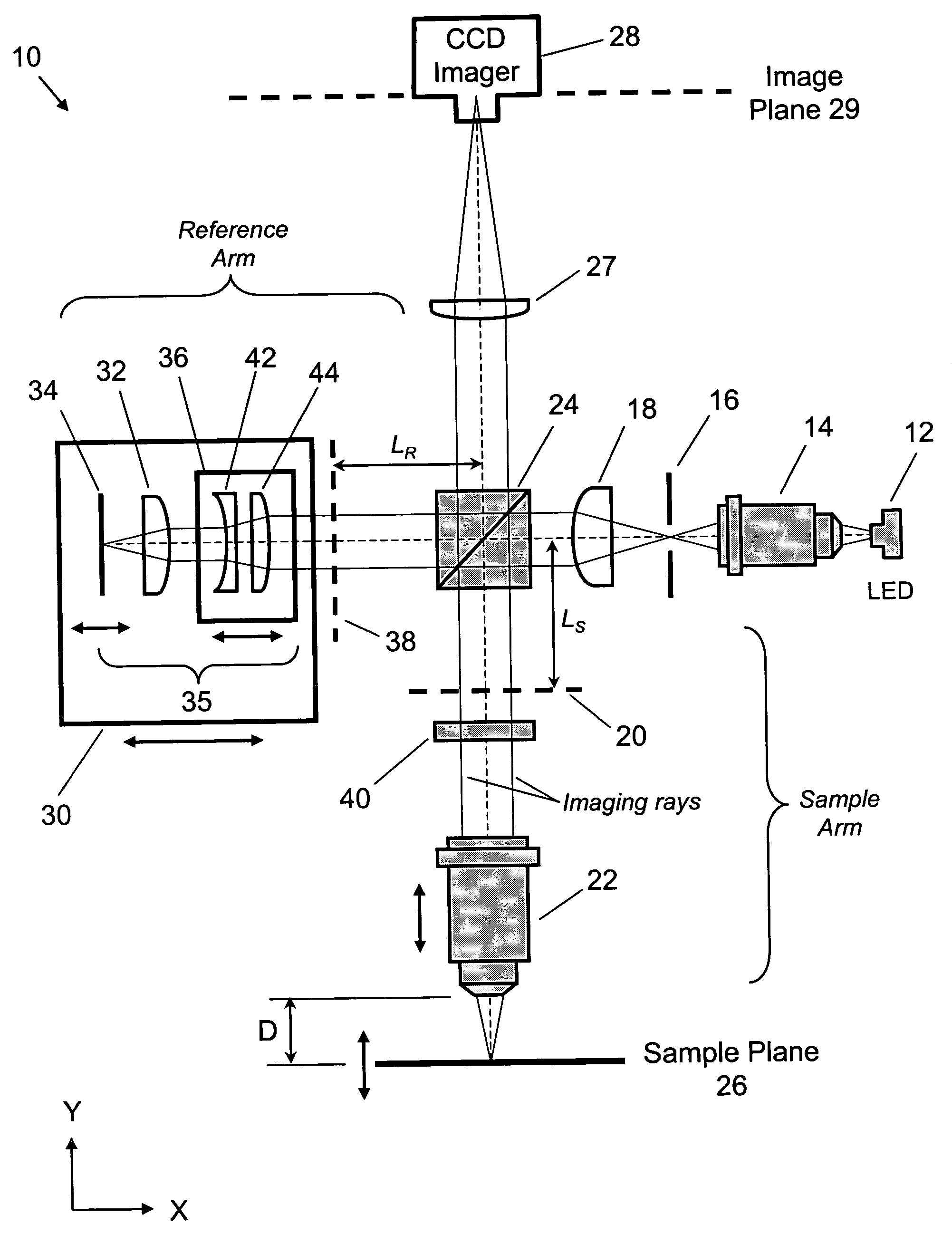Long working distance incoherent interference microscope
a long working distance, interference microscope technology, applied in the field of microscopy and metrology, can solve the problems of device malfunction, cross-wafer non-uniformity, residual stress, stress gradient, etc., and achieve excellent image quality, reduced overall system cost, cost and time, and high fringe contrast
- Summary
- Abstract
- Description
- Claims
- Application Information
AI Technical Summary
Benefits of technology
Problems solved by technology
Method used
Image
Examples
Embodiment Construction
[0033]FIG. 1 (prior art) illustrates a schematic layout of a well-known Linnik microinterferometer, which is based on a two-beam Michelson interferometer. The Linnik microinterferometer requires a pair of optically identical sample and reference objectives when operated with an incoherent light source, such as a LED.
[0034]FIG. 2 illustrates a schematic side view of a first example of a long working distance incoherent interference microscope 10, according to the present invention. Microscope 10 has a long working distance (LWD) sample objective 22, with its tip located at a distance=D above the surface of silicon wafer 100. Wafer 100 has MEMS structures 102 surface micromachined on its surface. Wafer 100 is held in place by a positioning stage 110, which is part of a microelectronics probe station 108. Microelectronic probe arm 104 holds probe tip 106, which touches the surface of wafer 100 and electrically activates selected MEMS elements 102. Using commercially available probes 10...
PUM
 Login to View More
Login to View More Abstract
Description
Claims
Application Information
 Login to View More
Login to View More - R&D
- Intellectual Property
- Life Sciences
- Materials
- Tech Scout
- Unparalleled Data Quality
- Higher Quality Content
- 60% Fewer Hallucinations
Browse by: Latest US Patents, China's latest patents, Technical Efficacy Thesaurus, Application Domain, Technology Topic, Popular Technical Reports.
© 2025 PatSnap. All rights reserved.Legal|Privacy policy|Modern Slavery Act Transparency Statement|Sitemap|About US| Contact US: help@patsnap.com



